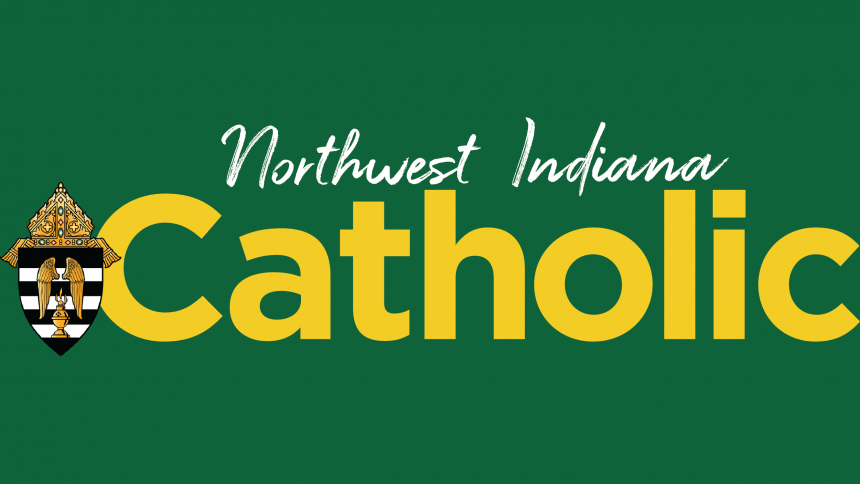
As published in the Northwest Indiana Catholic on January 17, 2016
A simple but profound way to live out the meaning of this Year of Mercy is to practice the corporal and spiritual works of mercy. The corporal works include: feed the hungry, give drink to the thirsty, clothe the naked, shelter the homeless, visit the sick and the imprisoned and bury the dead. These simple actions of kindness and love are the litmus test for those admitted into the Kingdom of heaven in Matthew, Chapter 25. In the parable of the sheep and goats, Jesus Himself takes the place of the needy, so that any action done for them is done to Himself.
This complete identification between the Son of God and the poor and suffering is truly astonishing. In Jesus’ ministry of preaching and healing, He is the one who offers mercy to the sinner, feeds the hungry, lifts up the sick and the dead, serving from a position of strength and power. Then, in the Passion and cross, a profound subversion takes place. Jesus becomes the prisoner, the thirsty one, the naked person, even the dead man. He moves from a position of strength to weakness, from the one offering mercy and healing to the one in need of it.
This radical shift adds a new dimension to the mystery and presence of God in the world. While we still pray to the Lord for graces, blessings, healing and even miracles, we also find God in the broken, the hopeless, the suffering and the marginalized. While Jesus dispenses God’s mercy through his death and resurrection, through the Church and the sacraments, He also is in need of that same mercy in the distressing disguise of the poor. He offers us life, blessing and peace but also begs those same gifts from us, as we share with the most marginalized and needy.
The great secret of the saints’ extraordinary holiness and love was their ability to literally see Christ in the suffering, the sick and the poor. Mother Teresa picking up that first man out of Calcutta’s gutter, Francis of Assisi kissing the leper, Vincent de Paul seeking out the poor in the slums of Paris and countless others have experienced the radiant presence of Christ in the darkest, dirtiest and most unexpected places—the lives of the most vulnerable and forgotten.
I had one such experience during my mission time in the Dominican Republic. The government there converted a soldiers’ barracks located in our parish boundaries into a prison. These four simple buildings around an open square, constructed for 100 soldiers, now housed 400 prisoners. The food was awful, the plumbing didn’t work, there were no classes, books, games or television, and the merciless sun beat down on them every day. Young boys and old men, folks with mental illness and disease, killers and the innocent all lived in these squalid conditions, day in and out, with little hope of freedom or justice.
We started celebrating Mass there every week, first through the bars and then inside the big open square. I will never forget a particular Eucharist I offered on August 6, the feast of the Transfiguration, the time on Mount Tabor when Jesus is momentarily glorified in the radiant light of the resurrection. As I celebrated the Mass that day in the middle of the heat, bugs, smell, chaos and despair, I experienced something that I can only define as mystical.
For a moment, during the Eucharistic Prayer, it was as if all those disturbing particulars that defined these men’s lives had fallen away and I could see them as God sees them - precious, radiant and beloved children of the Father. I felt like we had all passed over to the glory of heaven for just a few minutes.
When we reach out to others, putting the works of mercy into practice, we literally touch, feed, shelter, console and serve Christ Himself. These important works of mercy and charity make the Gospel come alive, both for us and the people we serve.
When we perform such Christ-like actions with great love, God uses us to powerfully unleash in this place and time with these people, the Paschal Mystery - the death and resurrection of Christ.
The spiritual works of mercy include: instruct the ignorant, counsel the doubtful, admonish sinners, bear wrongs patiently, forgive offences, comfort the afflicted and pray for the living and the dead. These works allow us to bring God’s mercy into our homes, schools, work places and neighborhoods. Our families may not need food or clothing but who doesn’t need comfort and forgiveness? Our classmates may not be homeless, but sometimes they hurt us or are hurting themselves and we can be Christ for them. All of us can pray for others, no matter where we are.
As we continue to live out this Year of Mercy, we commit ourselves to greater generosity, outreach, service and compassion, knowing that the Lord is quietly and patiently awaiting us in the disguise of every person we meet. What a privilege to love Christ in this way, to assuage his terrible thirst for our mercy and attention. What will we do to live out the meaning of this special Holy Year?
+ Donald J. Hying
